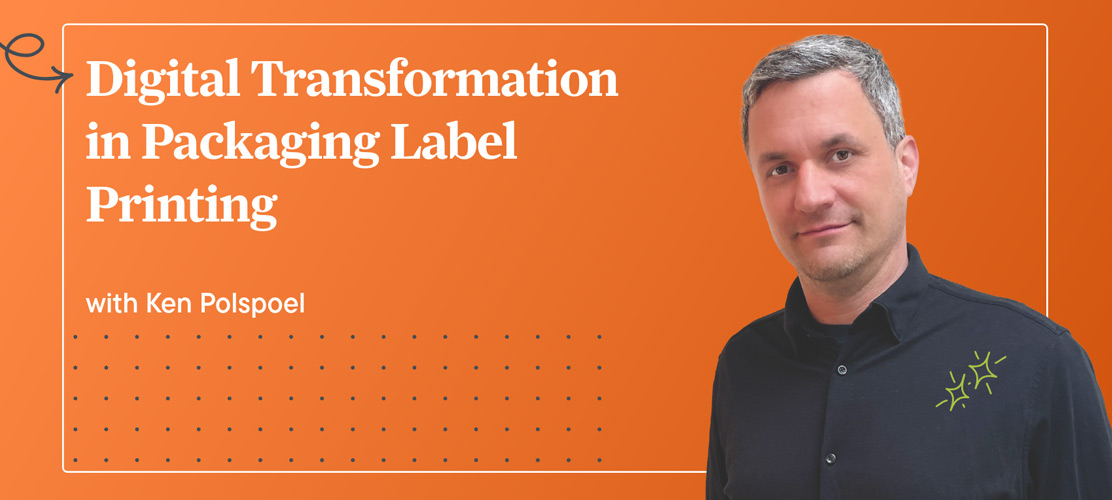
Written by Ken Polspoel
Category Specialist, Esko
It’s no secret that building a tech stack can be overwhelming. Navigating this vast landscape requires a clear understanding of your organization’s unique needs and goals.
It’s not just about finding the fastest printer or the most robust software; it’s staying abreast of market trends and understanding customer expectations.
This makes knowing what tool to purchase first, and when, very challenging. Or, on the other hand, you may have inherited a tech stack and are now wondering if you have the right tools in place to drive results.
In this article, I’m not going to give you personalized advice – every company and team is different. Instead, I am offering you a holistic view of how to measure and assess your current tech stack.
These insights will help guide the selection of tools that not only enhance your current operations but also align with future business expansion and evolving market demands.
Beyond Ink – Embracing the Digital Revolution in Label Printing
The packaging label printing industry is undergoing a seismic shift. What was once a purely analog process is being left in the rearview mirror by the advent of digital technologies.
Looking ahead, label printing businesses will be required to shift towards increased sustainability, driven by regulatory pressures, consumer demand, and technological innovation. These regulations will drive the adoption of data-driven tools and processes even further.
For executives in this space, understanding and embracing this digital transformation is no longer optional – it’s a critical imperative for survival and future growth.
In fact, 81% of business leaders view digital transformation investments as vital to business success (Valtech via Backlinko).
Nearly all large organizations in the US and UK—94%—have implemented a digital transformation strategy, highlighting the widespread recognition of its importance for business success (Valtech via Backlinko).
This isn’t about the *what* of digital transformation; it’s about the *how* – specifically, how to measure the impact of your digital initiatives and ensure they are delivering real, tangible value.
Finding Your "North Star" – Identifying Key Performance Indicators (KPIs)
According to a Keypoint Intelligence report, State of the Industry: Labels, “Digital engagement generally begins and ends with the procurement level [of the packaging value chain], when decisions have already been made—leaving price as the only consideration. The industry must find a way to connect digital value earlier in the process.”
This highlights a critical challenge in digital transformation: ensuring that digital value is communicated throughout the entire decision-making process, not just at the point of procurement.
By clearly defining your overall objectives—whether improved efficiency, enhanced customer experience, faster time-to-market or innovating around circular economy principles —you can ensure digital initiatives align with strategic goals rather and position yourself as an industry leader.
Once you have a clear vision, you can identify the KPIs that will track your progress.
Let’s look at some examples:
Operational Efficiency: Overall Equipment Effectiveness (OEE) measures the percentage of planned production time that is truly productive. Digital solutions like workflow automation, press layout optimization or productivity increasing color solutions can dramatically improve OEE by smarter production, ultimately reducing downtime, minimizing waste, and optimizing speed.
Waste Reduction: Digital workflows and advanced monitoring can pinpoint areas where waste, such as substrates and inks, can be minimized.
Production Throughput: Allows for the measurement of the number of labels printed per shift or per day. Digital printing technologies and automated workflows can significantly increase throughput.
Job Changeover Time: Track the time it takes to switch between different print jobs. Digital workflows, automated press setups, and optimized color management can drastically reduce changeover times, leading to more frequent short-run jobs.
Order Accuracy: Track the percentage of orders that are fulfilled correctly, with no errors in label Artwork, quantity, or specifications. Get it right-first-time, every time.
Lead Time for New Orders: Measure the time it takes from order placement to delivery. Digital workflows streamline communication and significantly reduce lead times.
Customer Satisfaction (CSAT) / Net Promoter Score (NPS): Gather feedback from customers regarding their experience with your label printing services, particularly concerning order accuracy, turnaround time, and communication.
Repeat Order Rate: Demonstrates customer satisfaction and retention by measuring the percentage of customers who place repeat orders.
Artwork Approval Time: Measure the time it takes to get artwork approved by clients. Track the number of iterations and reasons for artwork rejection. Digital proofing and collaboration tools significantly speed up approval processes.
By integrating comprehensive automation across prepress and production, Esko is a partner for label printers undergoing digital transformation. Automation Engine, for example, consistently enhances key performance indicators. Our AI-powered press layout optimization solution, Phoenix, reduces overproduction and setup times via advanced nesting algorithms, enabling converters to achieve shorter lead times and meet smaller batch sustainability goals.
Digital transformation encompasses more than just speed—it involves redefining resource efficiency, minimizing errors, and attaining the agility required to succeed in dynamic market conditions.
By transforming disconnected workflows into cohesive digital ecosystems, you can scale operational precision. This demonstrates that innovation and environmental stewardship are not only compatible but mutually reinforcing within the modern packaging landscape.
The Value Proposition: Quantifying the ROI of Digital Transformation
Measuring the ROI of digital transformation requires quantifying the resulting benefits in terms of cost savings, revenue growth, and improved profitability.
Here are some examples:
- Cost Savings: Reduced waste, lower labor costs (due to automation), and improved energy efficiency.
- Revenue Growth: Increased production capacity, faster time-to-market, and enhanced customer satisfaction (leading to repeat business).
- Improved Profitability: Higher margins due to lower costs and increased revenue.
Continuous Improvement: Using Data to Optimize Performance
Digital transformation is not a one-and-done endeavor. It’s an ongoing journey.
By augmenting your current processes with the latest technology to take into account evolving market conditions, you’ll not only achieve more value across multiple fronts, you’ll also put yourself in the position to seize new growth opportunities.
Use the data you collect to identify areas for improvement and continuously optimize your processes.
This requires:
- Regular Monitoring and Analysis: Track your KPIs on a regular basis and analyze the data to identify trends and patterns.
- Data-Driven Decision Making: Use data to inform your decisions and prioritize your investments.
- Continuous Learning: Stay up to date on the latest digital technologies and best practices.
Measuring the Future of Label Printing
Digital transformation in the packaging label printing industry is not the future. It’s already here, and it’s not going anywhere.
Focusing on the right KPIs, implementing advanced tools, and continuously optimizing performance is critical for driving significant improvements in your label printing processes.
Implement the most symbiotic technology for your business and let it guide you to a more profitable and sustainable future.



